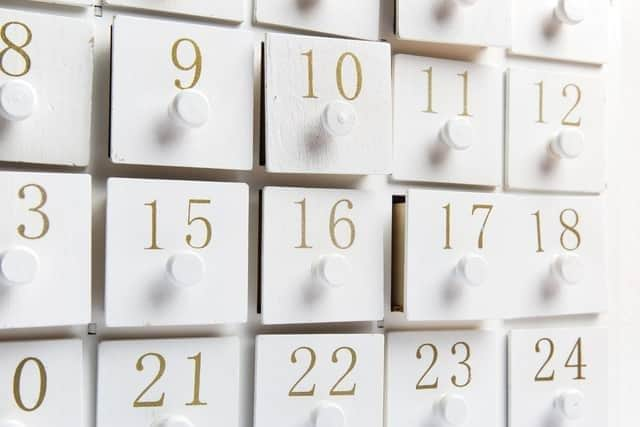What is Advent? What does it mean, who made the first Advent calendar, what are Advent traditions, and what is a Christingle?
The history of Advent dates back centuries and includes some evocative traditions.
Here’s everything you need to know.
What does Advent mean?
The word comes from the Latin ‘adventus’ which means ‘coming’ or ‘arrival’ – hence the season of Advent anticipates the coming of Christ on Christmas day.
How long has Advent been celebrated for?
Advertisement
Hide AdAdvertisement
Hide AdForms of what we now know as Advent date back to at least 480, although historians don’t know exactly when we began to officially celebrate the runup to Christmas.
In the early 6th century monks in the medieval Roman Catholic Church were told to fast during the month of December – a practice also known as St Martin's Lent or the Nativity Fast – and Advent is still known as the Lent of St Martin in some places. By the late 6th century the Western Chuch were marking the four weeks of the liturgical season of Advent.


The marking of Advent fell in and out of fashion in the following centuries – as did the practice of fasting – but by the time of Pope Urban V in the 14th century is was customary to observe five weeks of Advent before Christmas, essentially leading to the widespread modern tradition.
What are the traditions on Advent?
Common traditions of Advent include Advent calendars, lighting an Advent wreath, praying an Advent daily devotional, erecting a Christmas tree and other festive decorations, and lighting a Christingle.
What is a Christingle?
A Christingle (meaning ‘Little Christ Child’) is a symbolic object used in the Advent. It is traditionally made from an an orange (representing the world), with a candle (representing Jesus Christ) pushed into the centre, a red ribbon tied around the candle (representing the blood of Christ) and dried fruits or sweets on cocktail sticks pushed into the orange (representing the fruits of the earth and the four seasons).
What is an Advent wreath?
Invented by 16th Century German Lutherans, the modern Advent wreath is traditionally made from fir tree branches knotted with a red ribbon and decorated with pine cones, holly, laurel, and mistletoe. Four candles – three purple and one pinks – are lit on the four Sundays of Advent, with the pink candle lit on the third Sundaym, called Gaudete. A fifth, white, candle is lit on Christmas Day or Christmas Eve.
Who made the first Advent calendar?
The now-ubiquitous Advent calendar is a relatively new addition to Christmas preparations.
Like the Advent wreath, the idea of physically marking the days of Advent was an invention of the Lutherans – this time in late 19th century Germany – who made chalk marks on doors from the start of December until Christmas Day.
Advertisement
Hide AdAdvertisement
Hide AdHistorians disagree about who made the first Advent calendar, but the most romantic story dates back to the late 1800s when a young boy called Gerhard Lang was given a square of cardboard by his mother with 24 small sweets stuck to it. He was told he could eat one sweet a day over the 24 days of Advent. When he grew up Lang went into the printing business and started selling Advent Calendars in 1908. Others claim that similar calendars were produced by a Hamburg bookshop owner in 1902 – but the story isn’t half as good.
Comments
Want to join the conversation? Please or to comment on this article.